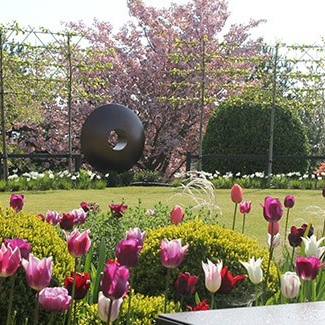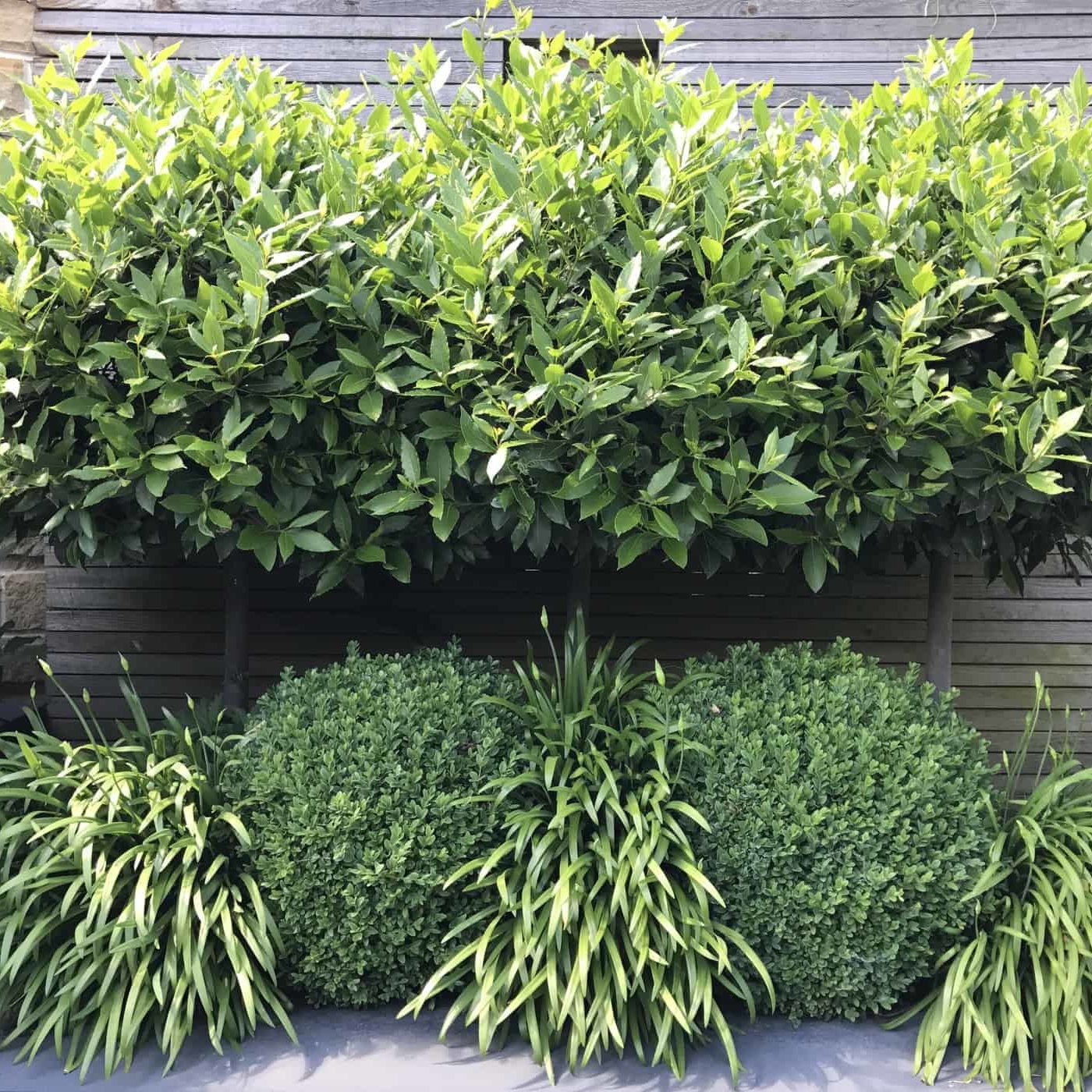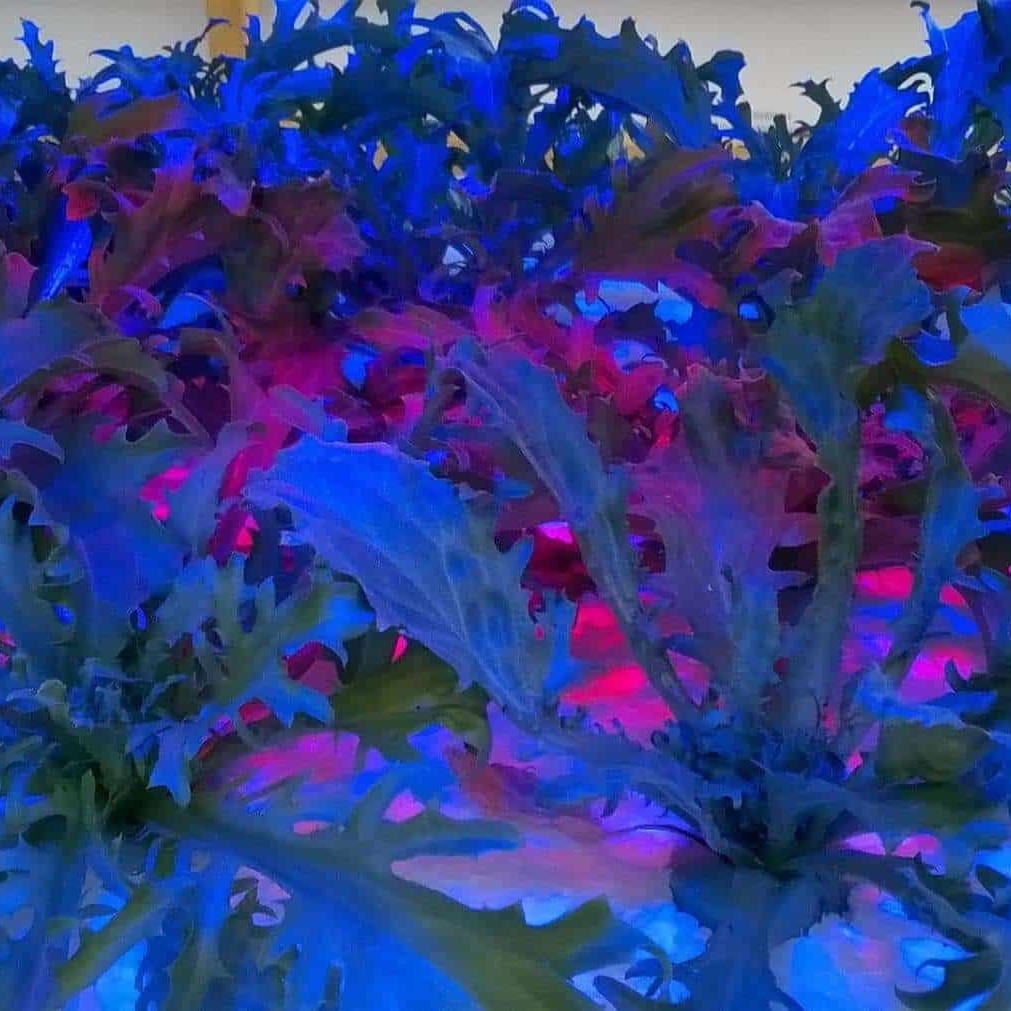Unusual shrubs and trees for average sized gardens
Five uncommon or underused shrubs and trees for average sized gardens, that look good way beyond their spring flowers have faded.
Rhododendron makinoi
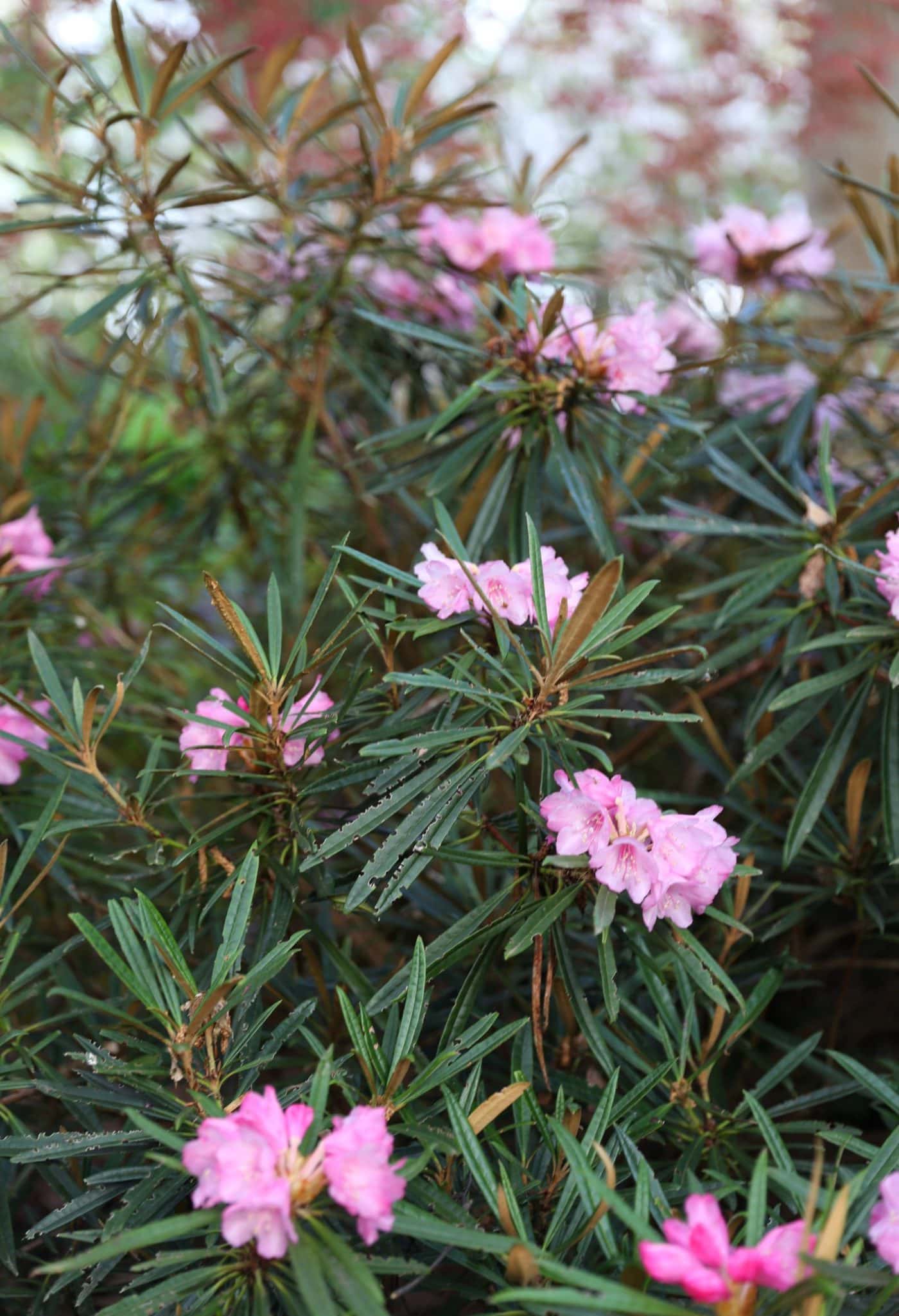
For me, the sign of a good Rhododendron is falling in love with the foliage alone; when choosing shrubs and trees for average sized gardens, don’t waste space on big plants you only enjoy for a month. The narrow leaves of Rhododendron makinoi give this shrub a somewhat Mediterranean look, and I’m told by one of the Wisley gardeners this species fared particularly well in the very hot dry spring of 2020. The species is variable, with cultivars producing flowers from pale to deeper pink in May-June. The flowers are just a bonus on top, and the way the new foliage emerges as the flowers fade adds another layer to their gentle drama as we observe annual cycles in the garden. The leaf undersides and young shoots especially are covered in very tactile tufts and matted with soft fawn-coloured wooly hairs, known as tomentum.
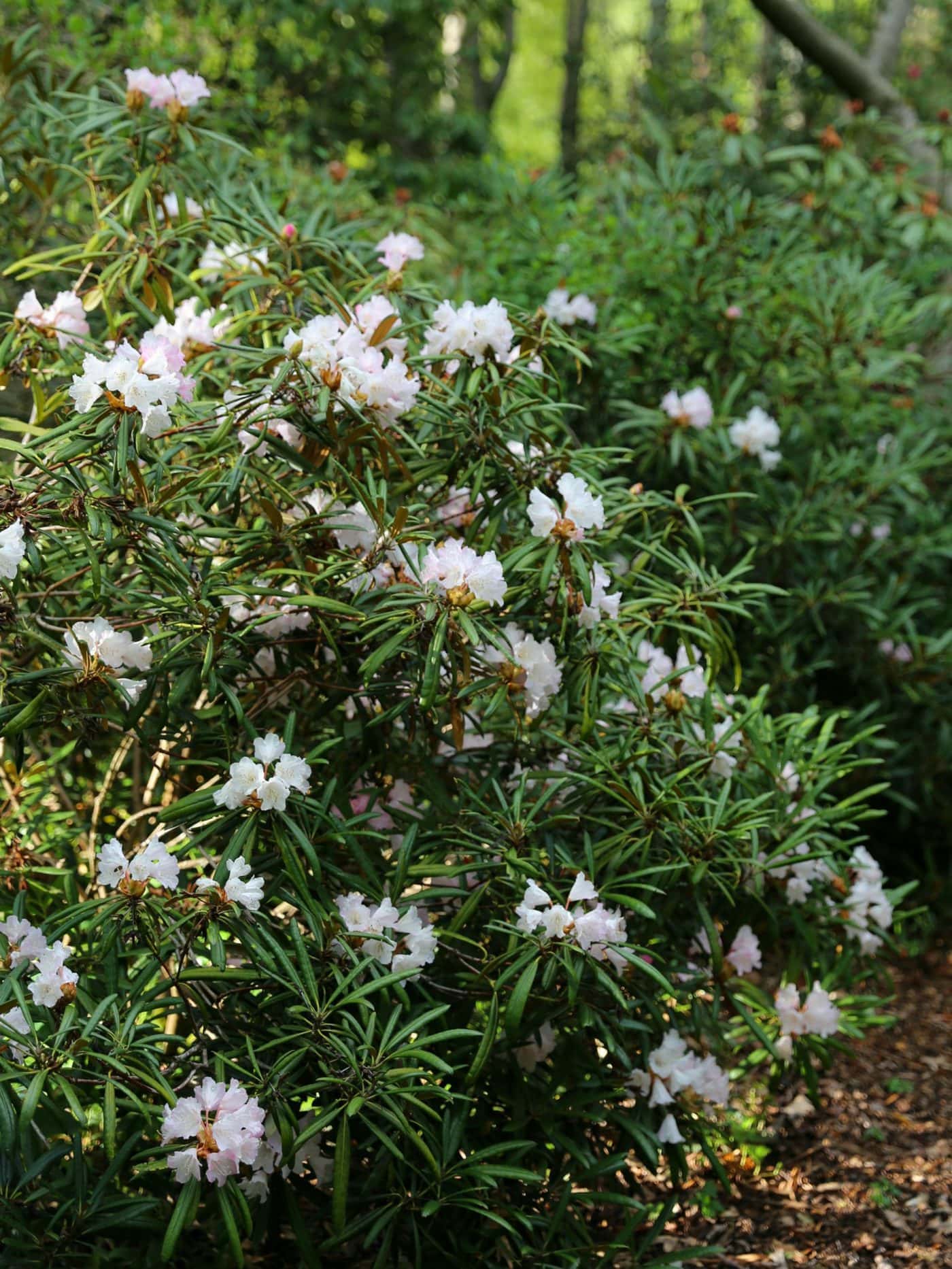
This species comes from Japan, where it grows up to 2000 meters altitude, making it perfectly hardy down to -10 to -15°C. It grows in semi-shade woodland conditions, needing acidic loamy or sandy soil mulched with leaf mould. They grow to around 1 meter in 10 years, forming a dense rounded shape. Other great narrow-leaved rhododendrons are Rhododendron roxieanum var. oreonastes which has creamy white flowers speckled and flushed with pink, and the mauve-flowered Rhododendron ‘Graziela’.
Staphylea × coulombieri ‘Grandiflora’

This hybrid is assumed to be a cross between Staphylea pinnata than Staphylea colchica, derived from Caerhays gardens in Cornwall. Staphylea are known as the bladdernuts, presumably after their attractive lantern-like papery fruit pods that turn from pale green through yellow in summer, to a warm brown as the foliage provides a colourful display in autumn before they drop. There are around 11 species of Staphylea, generally small upright multi-stemmed shrubby trees, with a wild distribution that stretches the full northern hemisphere.
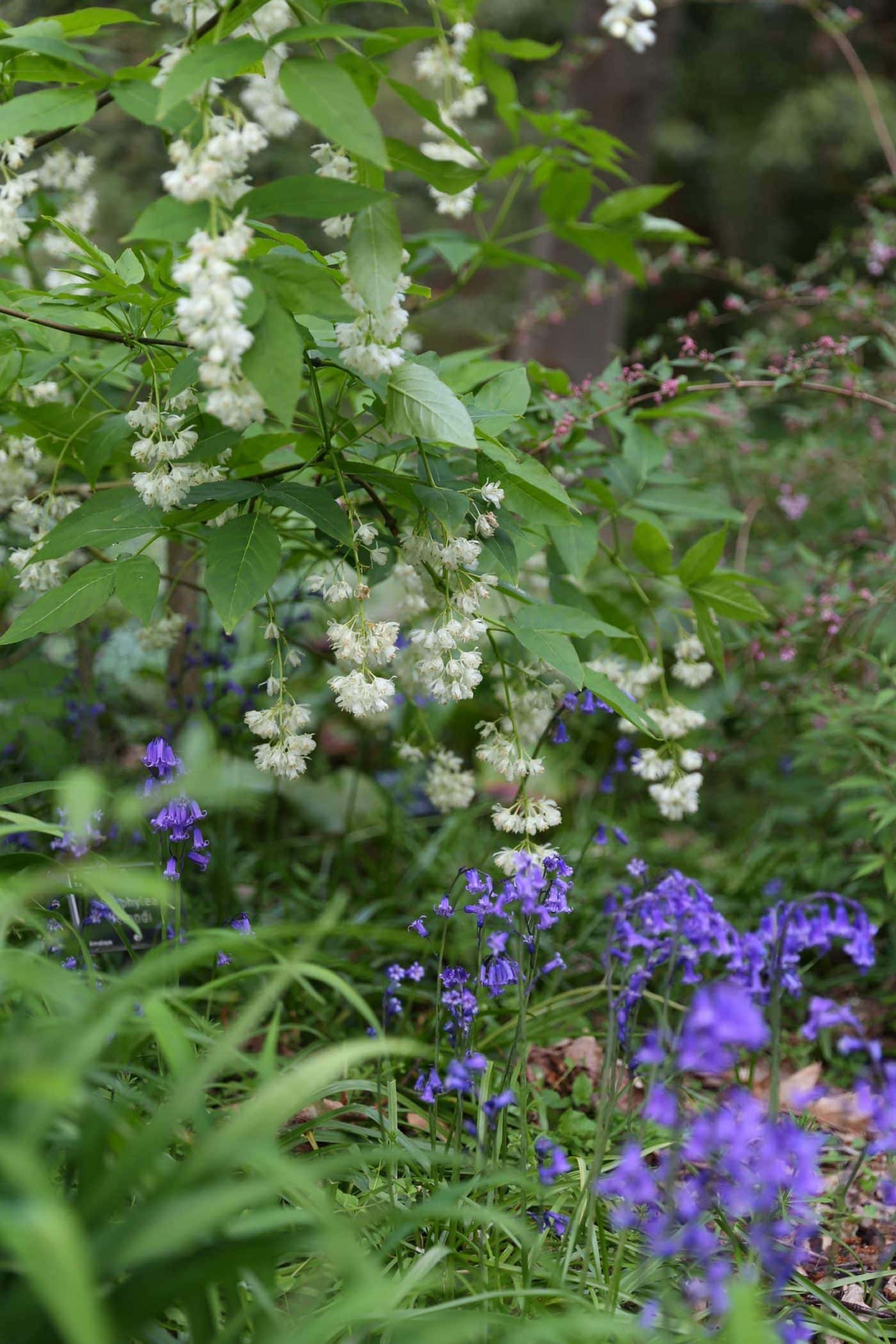
Looking at the few species growing at RHS Wisley, they all have a branching structure and foliage that reminds me of our native elderberry trees, but with pendulous panicles of abundant bell-shape white, cream or pink flowers in March and May. They are suited to all soil types provided there is reasonable drainage, fully hardy to below -15°C growing in any aspect and exposure, anywhere but full shade. Staphylea are also noted to have good resistance to honey fungus. Staphylea × coulombieri ‘Grandiflora’ grows to 3-4.5 meters, making it a great choice for small to average gardens if you’re looking for something unusual. Staphylea × coulombieri ‘Grandiflora’ is sometimes also called Staphylea × elegans, or Staphylea ‘Elegans’.
Ceanothus arboreus ‘Trewithen Blue’
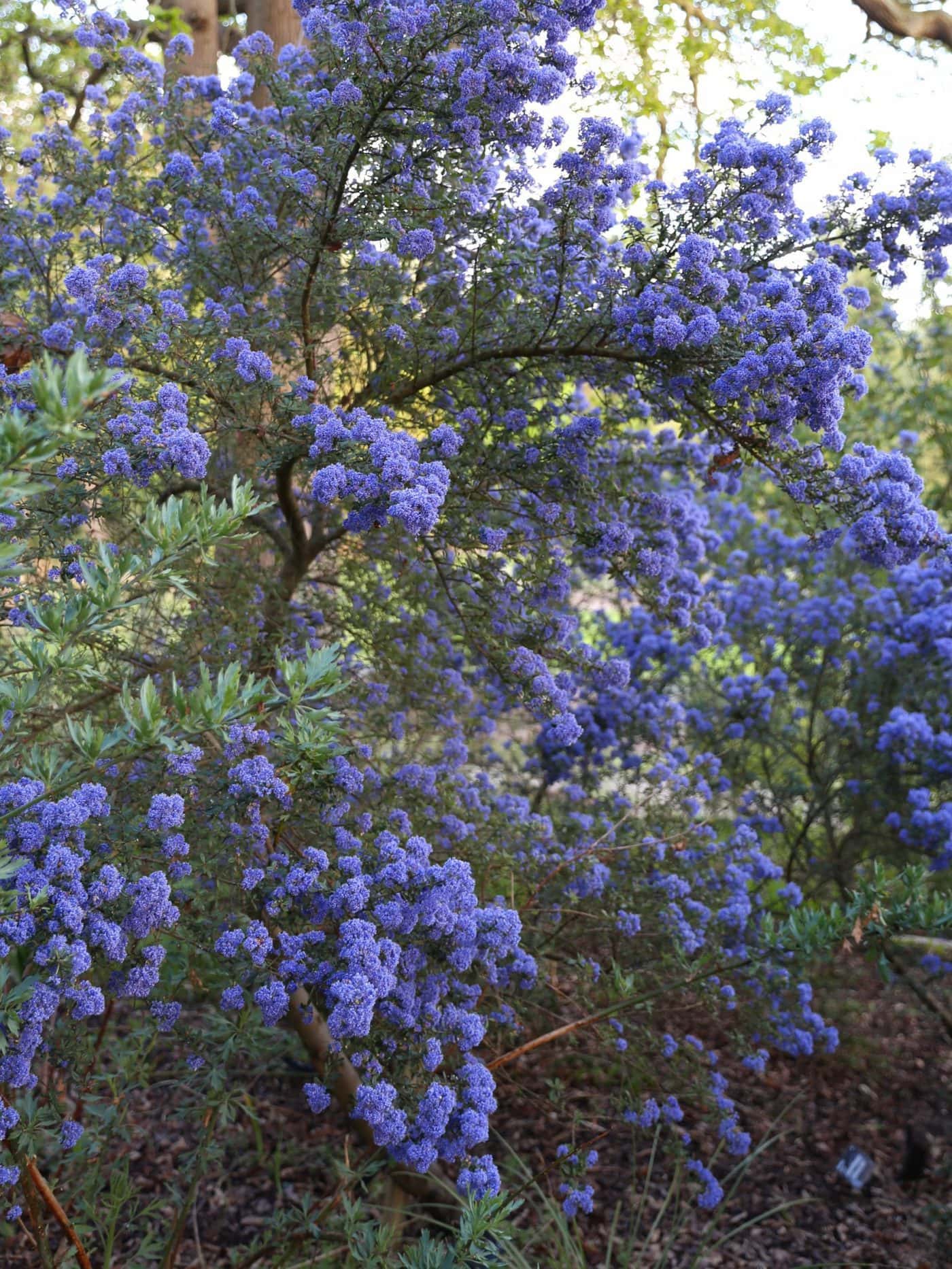
Ceanothus are the Californian lilacs, with 55 species from hot sunny areas of north and central america. Good drainage is key, in any soil but the most chalky. In mild coastal areas they are perfect for very exposed spots, but best grown on a sunny wall at colder inland gardens. As shrubs and trees for average sized gardens, Ceanothus range from low prostrate shrubs to small arching trees. They are loved for their inimitable blue flowers in May-June ranging from white, through sky blue to deepest indigo, set against rich dark green foliage. Ceanothus work best allowed to grow naturally as a shrubby form, gaining height over the years until they can be crown-lifted to form a small multi-stem tree.
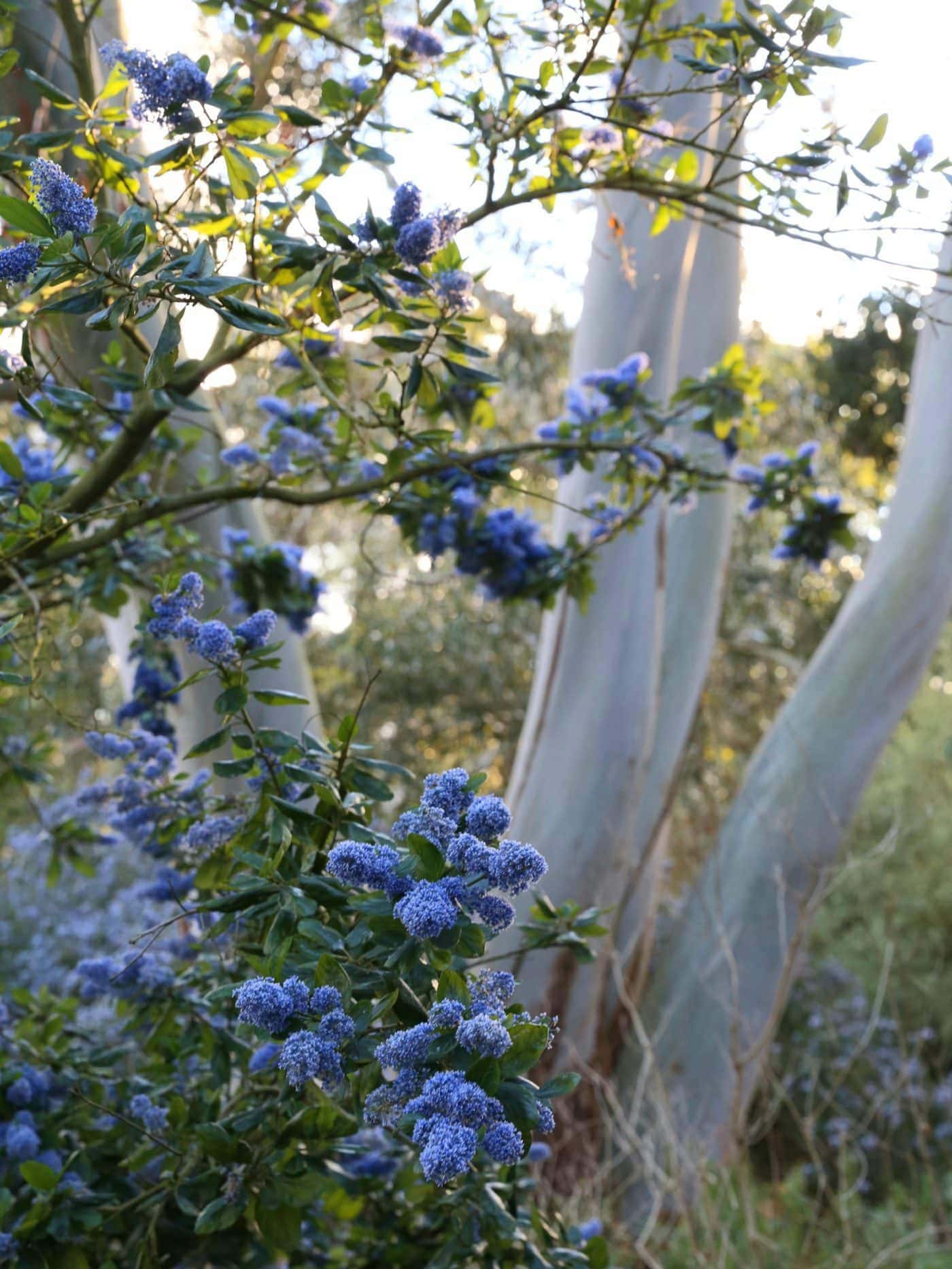
Ceanothus arboreus has relatively large leaves; the variety ‘Trewithen Blue’ provides larger and particularly abundant flowering, reaching around 3 meters in height and spread. I have Ceanothus ‘Dark Star’ in a big pot being trained as a wall shrub in Sheffield, to provide some disguise around the wheelie bins. That’s a particularly vivid deep indigo, with small dark leaves that look great against the black soot-stained stone houses common of South Yorkshire.
Lyonothamnus floribundus subsp. aspleniifolius
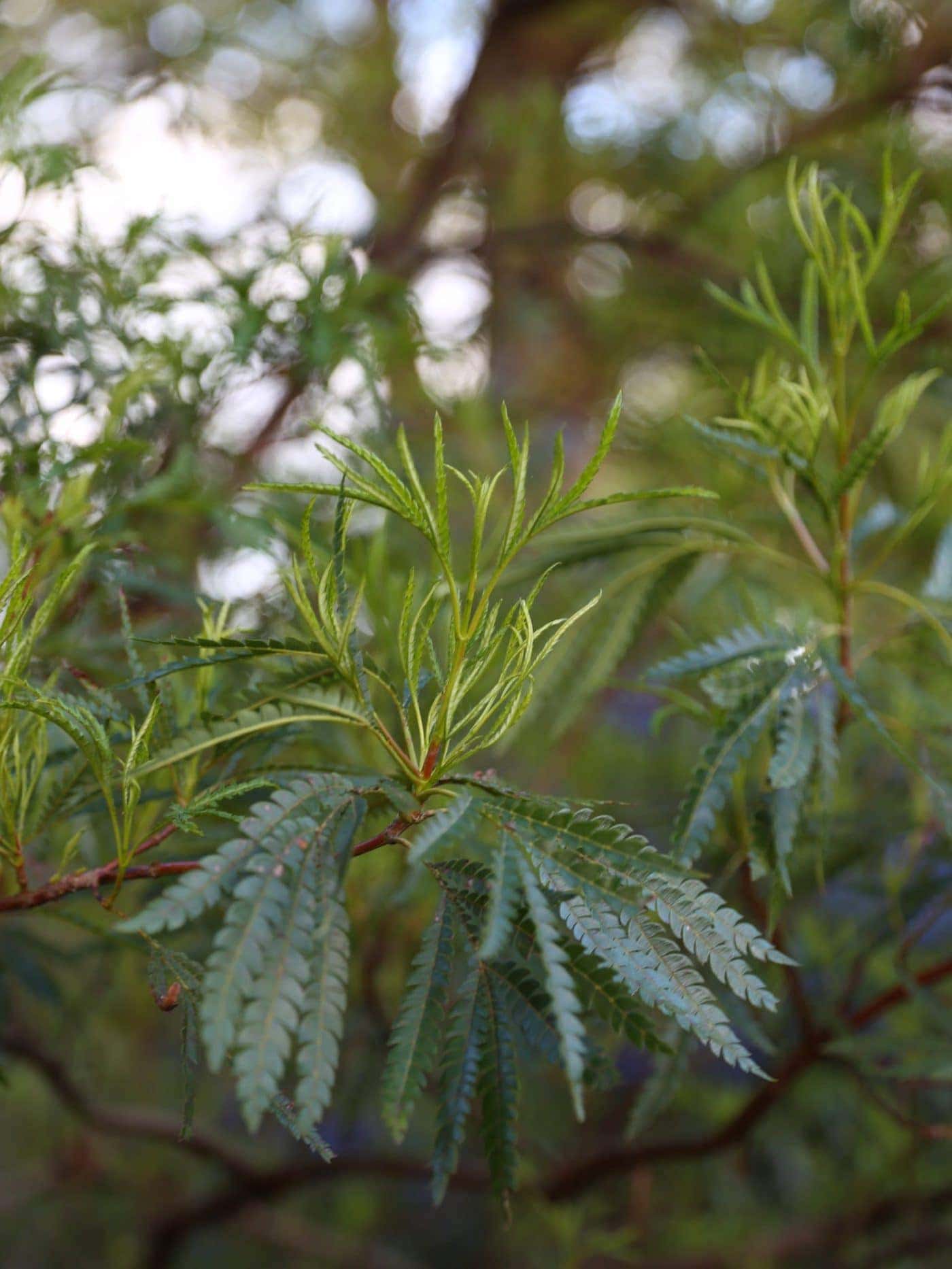
The Catalina ironwood. This is the only species in the genus; it’s monotypic. These evergreen trees are endemic to the Channel Islands of California, meaning they naturally occur nowhere else. Their wild habitat is dry scrubby woodland and oak forest, on poor soils and a mediteranean climate, where they grow in large clonal stands and groves. Rated to -5 to -10°C, but specimens at the Hiller Gardens in Hampshire have been known to survive -15°C in the harsh winter of 1986-87.
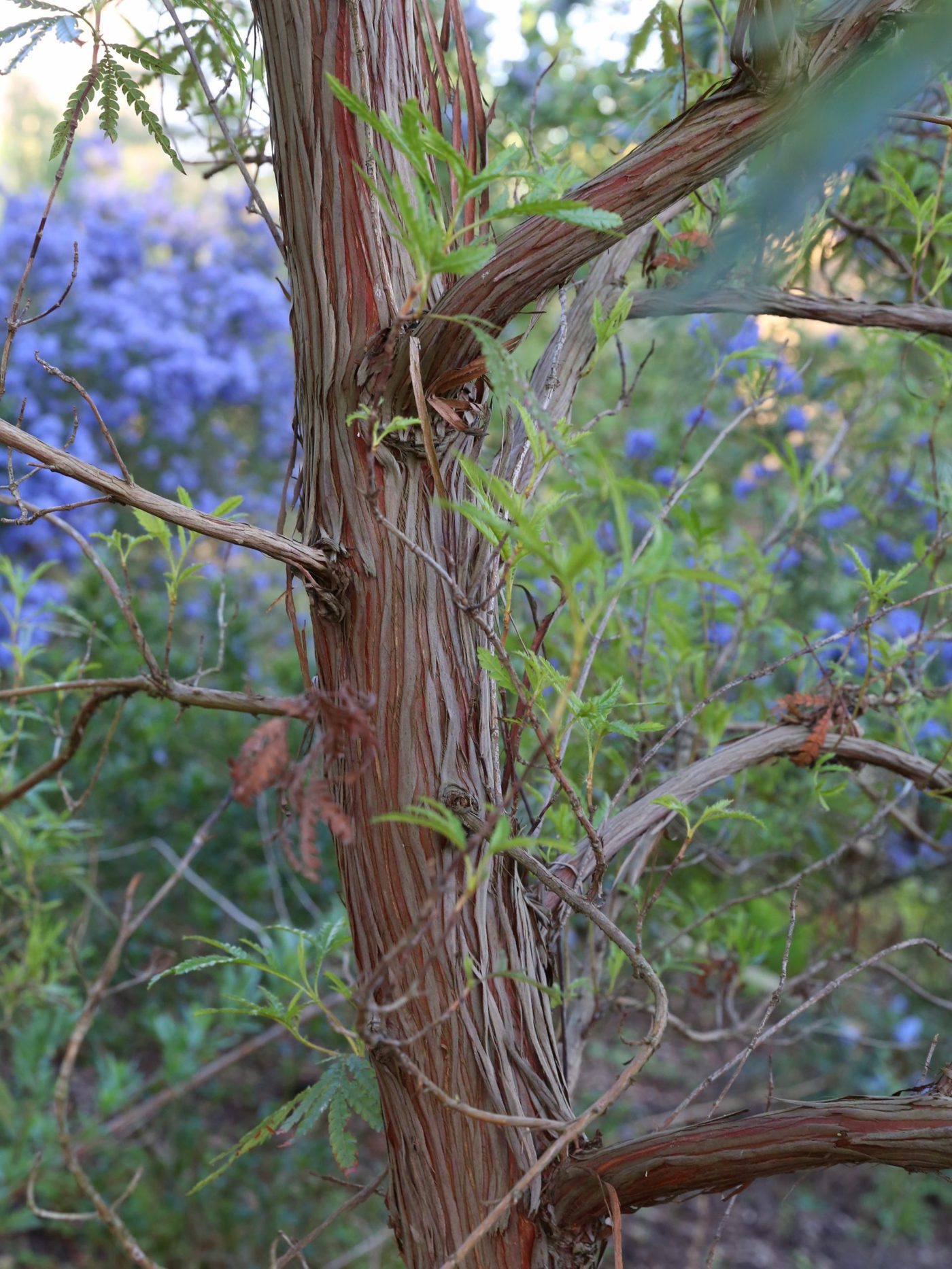
The subspecies aspleniifolius is a fast growing small tree, slender in habit and forming a remarkable slender trunk with tactile rusty-silver cracked and peeling bark displayed within the open branches and canopy, like a mini redwood. They can be multi-stemmed. The ferny leaves are glossy above and grey-haired below. Creamy white flowers similar to a rowan appear in early summer. Reaching 3 meters in 5 years, and a mature height around 7.5 meters in 20 years.
Deciduous azaleas
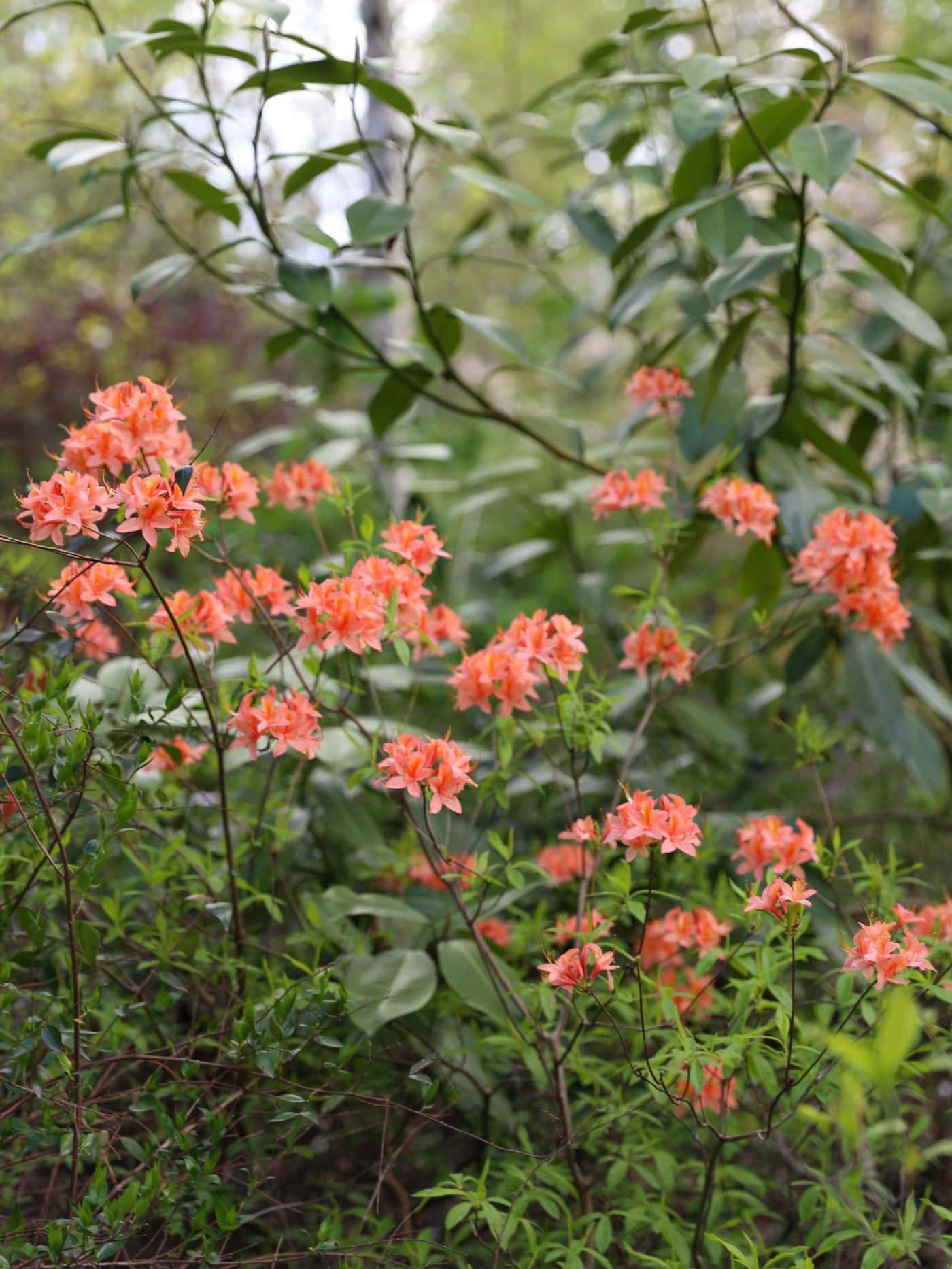
While deciduous azaleas are not uncommon, they are surprisingly underused in domestic gardens. Their evergreen siblings perhaps take all the glory, possibly a hangover from the Victorian obsession with evergreens. Deciduous azaleas bloom in tones from yellows through coral to deep burnt oranges. There is a slow build up to flowering, as large vibrant purple, peachy and rusty buds grow and slowly open on bare branches. The fragrant blooms burst among the freshest lime green foliage in late spring. They have a tropical look, bringing us from the soft and cool tones of spring through to the warmth of summer. And again in autumn, their foliage colour is spectacular. The deciduous nature makes them perfect for under-planting with shade-tolerant plants or early spring bulbs.
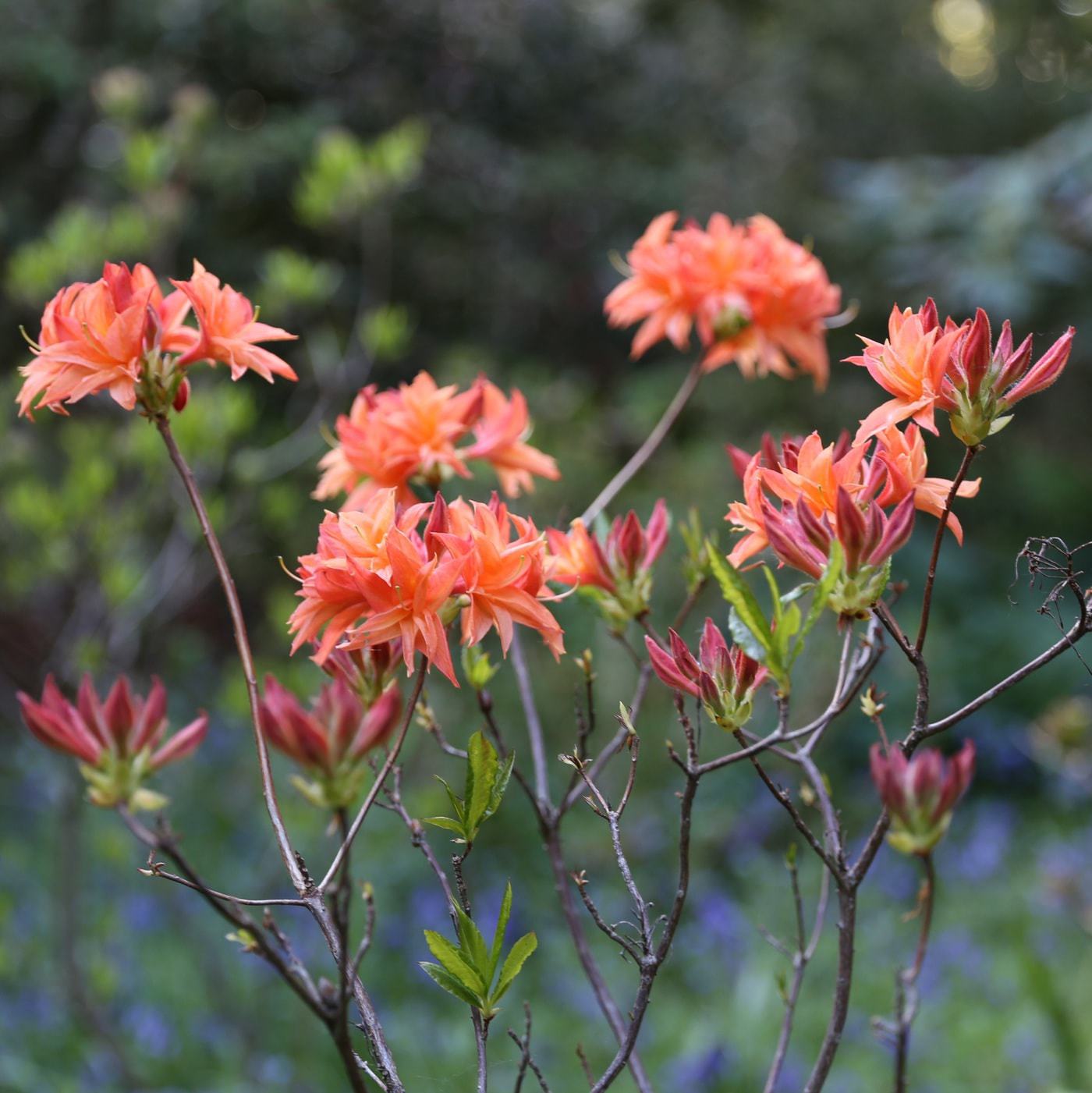
The yellow-flowered and heavily fragrant Rhododendron luteum is the toughest and most common deciduous azalea, potentially invasive in some areas. However, a plethora of varieties are available as shrubs for average sized gardens, generally growing to 1-2 meters in height and spread. The RHS trial report from 2016 covers all the best ones that are easily available. You’ll need acid soil, and full sun to partial shade, ideally in a sheltered spot. ‘Arneson Gem’, ‘Coccineum Speciosum’, and ‘Satan’ are some of the best available from the orange to crimson end of the spectrum, unlike ‘Spicy Lights’ pictured which seems to have fallen out of cultivation.
All photos taken by Owen Hayman in early May 2021, at RHS Garden Wisley.
Owen Hayman
Owen joined the Bestall & Co planting and aftercare team in spring 2019. He is an RHS qualified horticulturist, holding a full Level 3 Diploma in Horticulture, and recently came in the top 3 at the Northern Regional Final of The Young Horticulturist of the Year 2019. After first doing a foundation diploma in Fine Art, he went on to gain a degree and masters in Plant and Soil Science from the University of Sheffield in 2014. Owen worked as a researcher on various field research projects in Alaska, Panama and Borneo. When not away in the field, he became obsessed with visiting gardens and nurseries across the British Isles and the Netherlands, developing his own garden, and then taking on a walled allotment garden as a personal project. He realised his true passion was in horticulture, and so moved away from academia and into the world of specialist plant nurseries and professional gardening.
Owen is now studying the Wisley Diploma, but continues to write articles for us on a monthly basis, and we're delighted to maintain contact with such a passionate and knowledgable plantsman.

